| Umělec magazine 2009/1 >> Faith, Hope & Charity Out of their labours and into our lives in Eisenhuettenstadt | List of all editions. | ||||||||||||
|
|||||||||||||
Faith, Hope & Charity Out of their labours and into our lives in EisenhuettenstadtUmělec magazine 2009/101.01.2009 Benjamin Tallis | photo essay | en cs de es |
|||||||||||||
|
Dear Charity,*
We came to Eisenhuttenstadt by way of Dresden, Goerlitz and the small towns that straddle the landstrasse of the Western East. But really we came by way of you. From the time you first told me about Eisenhuttenstadt I was keen to see it and helping Julia move her sister to Dresden provided the perfect excuse to take a DDRoad-trip. Now I can better respond to your thrown gauntlets of mourning, melancholia and disavowal in—and of—the second world. We had a little difficulty in arriving, or rather in knowing we had arrived, as the normally flawless signage of the Bundesrepublik dissolved into the listless sprawl of the industrial outskirts. It seemed difficult to get ones bearings and curate a consistent first impression. You were right about the lack of landmarks, although for me this was offset by the lurking, near omnipresence of the steelworks. Although, apart from when directly exploring the Werkstrasse or snaking along Street 24, even this only seems to appear in the corner of one’s eye, although its continued peripherality underwrites its status as the main source of civic identity. This is the IronWorksTown, where the steel is forged and so it remains... Where the larger streets have been refurbished, they seem to highlight the emptiness that depopulation brings to a town tense with the struggle between trophy status and atrophication. Across from the optimistically named ‘City Centre’ complex at the steelworks end of the main drag is bare, barren ground, which only draws more attention to the main attraction in town this week —Ladies night with Grosser Menstripshow. The muscled figures of the strip-show contrast with the veiled strength of an unknown steel worker, immortalised in an iron curtain that he helped to weave. Next to the Café C’est La Vie he gazes out across the latest life in what started out as Stalinstadt. The opposing facades of the city hotel and the town hall and contrast preserved decay with the refurbished retroism that has come to favour what were the houses of the high-ups. Having traversed the wasted memoryscapes of the further-East, I was actually struck by the relatively modest scale of the workers’ housing developments. The plant with its six blast furnaces was big enough, but this is not on the scale of Nowa Huta with its fleets of panelaks and broad boulevards. This was indicative of the difference between my experience here and there, despite the continued blurring of similar themes played out in different language and signs. Walking through the Wohnkomplex that houses the former-nursery in which the DDR Everyday Documentation Centre resides, called to mind another of your recommendations. When I watched Wajda’s Man of Marble and Man of Iron I was most taken by the sensitive presentation of the genuine hope that sprang from solidarity. Surely Agnieszka’s fascination with the worker-hero—Birkut—is at least in part from this same feeling at a time when the cracks in that particular edifice were becoming increasingly apparent. In a country ravaged by what must have felt like a thousand years of being trampled in the name of great, patriotic Reichs, the need for collective action could not have been clearer. Birkut, still Stakhanovite at this stage, talks enthusiastically about his new building methods, which if further improved and applied universally could help to provide homes for everyone in Poland. After the previously longed for End of History, hope is now seen as audacious if it dares to nudge the right wing consensus a nanometre to the left. In these times it is good to have a reminder of the real, if tainted and ultimately betrayed hope that socialism provided. If you were here I am sure you would remind me of Volker Braun’s words in Property. “What I never had is being torn from me. What I did not live, I will miss forever.” And you would be right to do so, because more and more this is how I feel. It was you who introduced me properly to these feelings and my trip to Eisenhuttenstadt is in many ways an inward as well as an outward journey. The loss of alterity, the sense of missed and wasted opportunities still lingers. You kindly recommended a good staging post on this journey to recovered memory—The Centre for Documentation of Everyday Culture/Life of the DDR and particularly, its Open Depot for donated and collected objects. Unlike the shimmering, interactive surfaces and retro-glamour of the newly opened DDR Museum in Berlin, the Open Depot opts for a low-fi, dignified and substantial approach. Rather than seeing socialism as spectacle, one is immersed in the every day life of the East. This seems right for Eisenhuttenstadt, which lacks the bombast and trabbie-tours that we know from Berlin and Nowa Huta. Seeing the wonders of another Wirtschaft encased, pristine and elevated from material value to cultural value by way of pedestals and vitrines is a captivating experience which certainly encourages contemplation. You know how political I am and would probably have been surprised that I didn’t react in horror to the apoliticised presentation which is particularly apparent in the short, sweet curatorial texts. But – teasing me now in my own voice – you might say “Doesn’t that just gloss over the real terror that pervaded the lives of others, not so lucky as you to have grown up in a ‘free society’?” In this respect I was lucky to be travelling with Julia, who having grown up in Moscow and East Berlin knows a thing or two about nostalgia. Through talking to her I grew to realise that despite the coincidence of so many of my interests with the work of the Open Depot, this was not for me and by criticising the apolitical presentation, I would miss much of the point. This is a place of rehabilitation and recovery; a place to re-validate the lives that were thrown so callously by the winds of change. From Anna and Florian we know the dark side of Stasiland all too well, but I realised that I hadn’t thought enough about what impact the fall had on the workers who actually built the land beyond the wall. To suddenly be told that what you had been working for was wrong, that the fruits of your labours were obsolete, that your life had essentially been second-rate, so much garbage in the newly completed (ich) bin of history. The feelings of inadequacy and resentment when, in the new scale of things, you are so obviously the poor relation must have had such a devastating effect on the kollektiv conscience. We agreed that the Documentation Centre and its Open Depot give a chance to re-examine these lives and remember the good things, the good times, as well as the bad. We also concurred that this was venture of great value, although Julia felt that even this noble attempt failed to avoid the accursed Ostalgie. As a project that aims to address the tragedy of ostensibly wasted lives, it has not yet found an answer to the farce that is the Ostalgic hipster. As much as this deserves mockery, we each had our moments in the museum; not least for me in front of the fantastically named Robotron k8915 computer, the silver protective gear from the old steelworks or the cylindrical dishwasher. These however were surpassed by Julia’s irrepressible lightness and joy at being reunited with her communist school bag, resplendent in pink and purple. And who amongst us can truly say we are immune, even if you and I, like Joseph Beuys, didn’t actually have it to begin with? Are we too then thieves, as you accuse Beuys of being for his work Economic Values, which as you point out, looks remarkably similar to the shop display in the Open Depot? If, even when such sensitively and well-curated memory pieces can only exist in their true form for those who lived the experience in question, then the Open Depot runs the risk of fuelling the commodity fetish that reduces life to a series of consumption opportunities. I wonder how well this bodes for attempts to curate the collective memory in other parts of the post-socialist world that have been overrun by a mindset that values economics above all else. Your analysis of Beuys’ Economic Values points highlights the transformation of products deliberately chosen for their contrast with slick Wessi design and packaging into the kind of curios that continue to attract the arch admiration of the Prenzlauerberg Ping-Pong set. However, other forces are also at play. Julia asked if video of a bakery in a not-so-supermarket reminded me of my time in Ukraine. To her surprise, I responded that actually it far more closely resembled lines of loaves in the supermarket bakeries from my early 80s English childhood. The rise of PoMo turbo capitalism has swept away the modernist dreams that inspired Kraftwerk as much they stoked socialist fires. Having learned the lessons of the blinkered, male-dominated, heteronormative, neo-imperialist past, can we revive a new trans-modernism that would put common spaces of interaction and engagement centre stage? My hope that people can once again come before profits will probably cause you to write me into your third column—the disavower, caught in a nostalgic haze for what he doesn’t accept has been lost, even though he never had it. I wonder how you would categorise yourself? I wonder if, like Volker Braun, you also feel that hope lies across our paths like a trap. When leaving Eisenhuttenstadt, we again swept past the newly rebranded steelworks which, emblazoned with the logo of the world’s largest steel maker, now employs only 2500 people who churn out ‘high-quality flat carbon steel products.’ Despite the continued production of steel here, despite the noble efforts of the Open Depot, despite the limitations of my own perspective, I have the impression that this ironclad Wendeland is still a place of melancholy rather than a site of mourning. What is clear however, is that while we know how real the nightmares were, we also need to make sure we remember the genuine quality of the dreams. In this way we can draw courage to dream afresh, not merely recurrently, and escape the mnemonic no-mans lands of nostalgia and amnesia. Yours, Benjamin Tallis
01.01.2009
Recommended articles
|
|||||||||||||
|
04.02.2020 10:17
Letošní 50. ročník Art Basel přilákal celkem 93 000 návštěvníků a sběratelů z 80 zemí světa. 290 prémiových galerií představilo umělecká díla od počátku 20. století až po současnost. Hlavní sektor přehlídky, tradičně v prvním patře výstavního prostoru, představil 232 předních galerií z celého světa nabízející umění nejvyšší kvality. Veletrh ukázal vzestupný trend prodeje prostřednictvím galerií jak soukromým sbírkám, tak i institucím. Kromě hlavního veletrhu stály za návštěvu i ty přidružené: Volta, Liste a Photo Basel, k tomu doprovodné programy a výstavy v místních institucích, které kvalitou daleko přesahují hranice města tj. Kunsthalle Basel, Kunstmuseum, Tinguely muzeum nebo Fondation Beyeler.
|







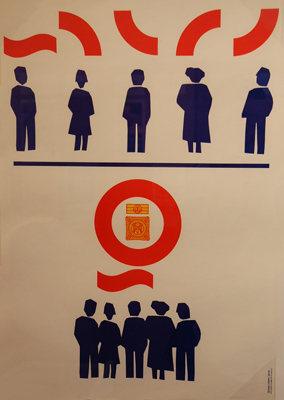
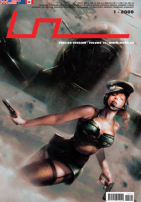



























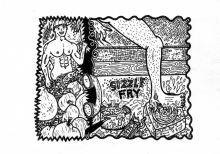
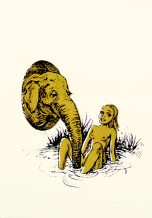
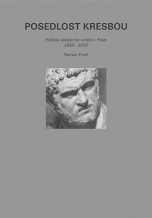
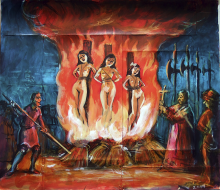


 New book by I.M.Jirous in English at our online bookshop.
New book by I.M.Jirous in English at our online bookshop.
Comments
There are currently no comments.Add new comment